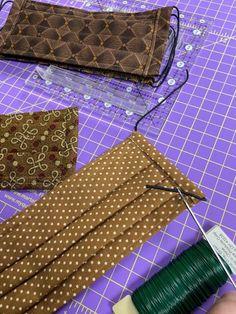School has begun in most areas of the state, whether virtually or in-person classes.
The Centers for Disease Control suggests that reopening plans preventing the spread of COVID-19. When used consistently and correctly, along with other important factors, masks help slow the spread of COVID-19.
Other important factors to prevent the spread include social distancing, washing hands, and regular cleaning and disinfecting frequently touched surfaces in schools and buses. CDC recommends that people wear masks in public settings and around those outside their household. The use of masks is especially important when social distancing is difficult.
Masks are recommended as a simple barrier to help prevent respiratory droplets from traveling into the air and onto other people when the person wearing the mask coughs, sneezes, talks, or raises their voice. Masks are an example of source control. Several studies1-13 have documented people with COVID-19 who never develop symptoms (asymptomatic) and those who are not yet showing symptoms (pre-symptomatic) can still transmit the virus to other people. Masks are meant to protect other people in case the wearer is unknowingly infected but do little to protect the wearer.
The use of masks in educational settings may present challenges, particularly for younger students and special needs students.
Appropriate and consistent use of masks may be challenging for some students, teachers, and staff, including:
Younger students, such as those in early elementary school.
Students, teachers, and staff with severe asthma or other breathing difficulties.
Students, teachers, and staff with special educational or healthcare needs, including intellectual and developmental disabilities, mental health conditions, and sensory concerns or tactile sensitivity.
While masks are strongly encouraged to reduce the spread of COVID-19, CDC recognizes there are specific instances when wearing a mask may not be feasible.
Consider use of clear masks that cover the nose and wrap securely around the face by some teachers and staff. Clear masks may be of benefit for those working with students or staff who are deaf or hard of hearing, teachers of young students learning to read or English as a second language learners, and students with disabilities provided the masks do not cause overheating for the wearer.
Practical Recommendations
Include masks on school supply lists and provide masks as needed to students, teachers, staff, or visitors who do not have them available.
Include clear masks on school supply lists for teachers and staff who instruct students who are deaf or hard of hearing, students learning to read, students with disabilities, and those who rely on lip reading as a part of learning, such as students who are English language learners.
Coach everyone in the school on the correct use of the masks, including wearing masks over the nose and mouth and securely around the face; washing or sanitizing hands before putting on masks; not touching the mask once on or washing hands after touching the mask, washing or sanitizing hands before and after helping students put on or adjust their masks; not wearing a wet mask, which can make it difficult to breathe; not sharing or swapping masks. Marking masks with the student’s name or initials may help. Make sure students store the masks in separate locations, and that they are washed every day.
Schools and teachers may want to have additional or disposable masks available for students, staff or visitors.

